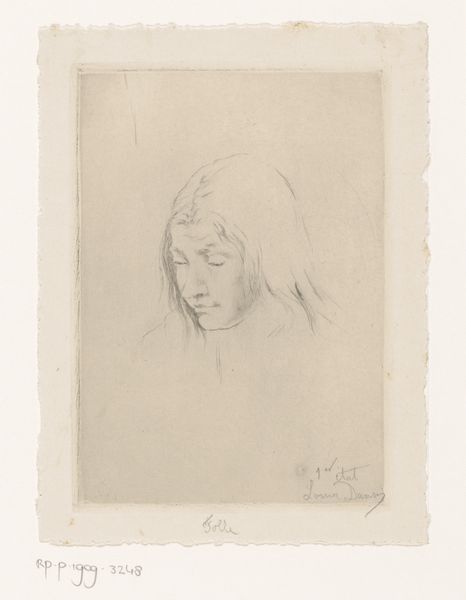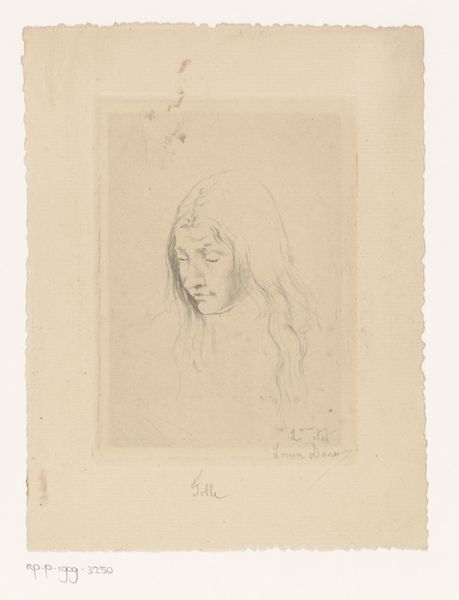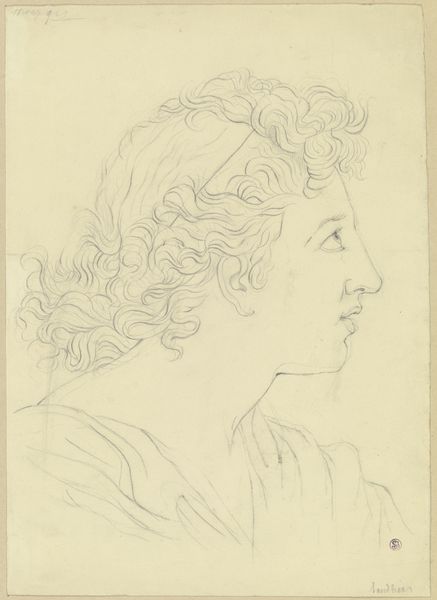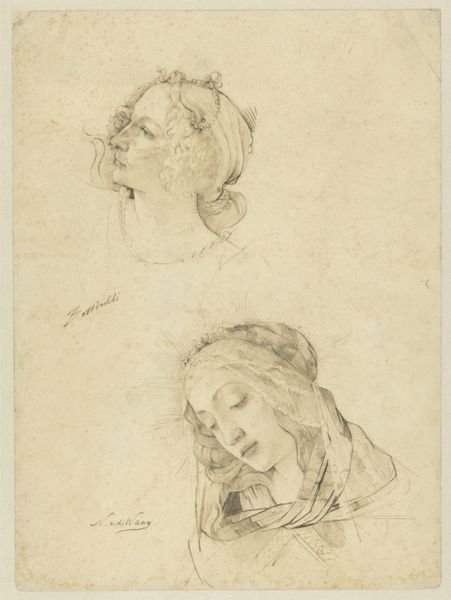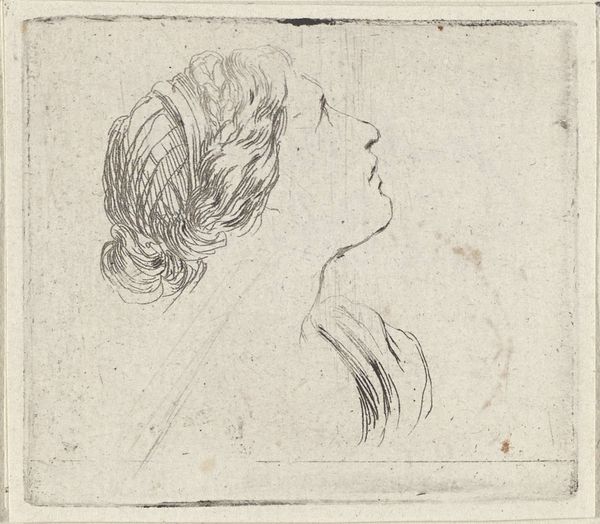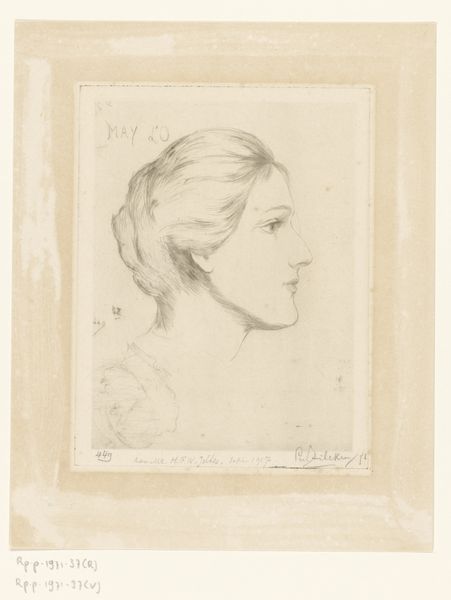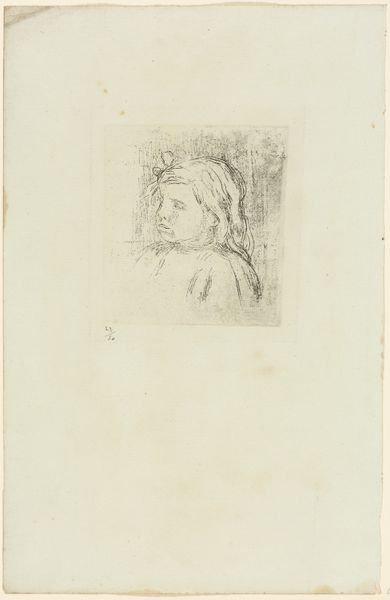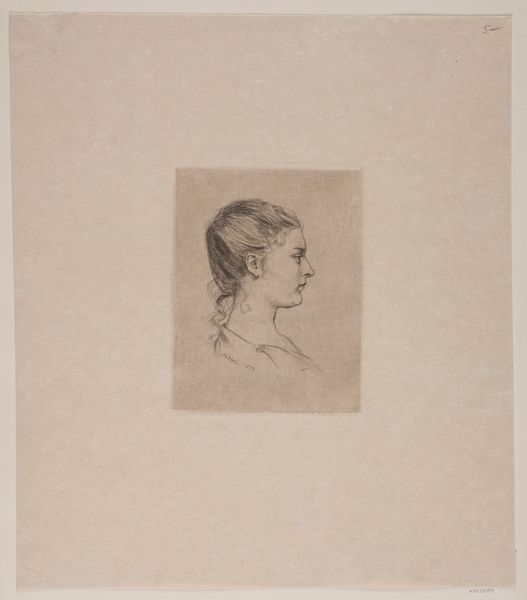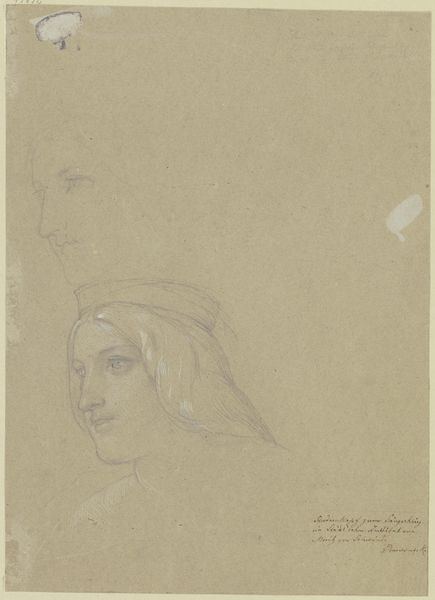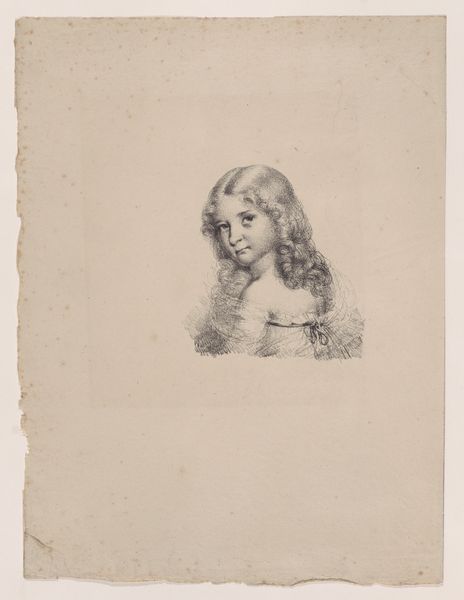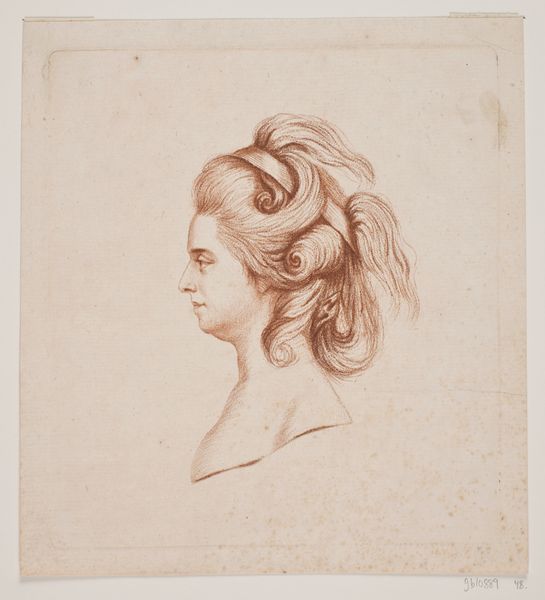
drawing, coloured-pencil, red-chalk, pencil, graphite, pastel
#
portrait
#
drawing
#
neoclacissism
#
coloured-pencil
#
self-portrait
#
red-chalk
#
pencil
#
line
#
graphite
#
pastel
#
history-painting
#
academic-art
Dimensions: 7 x 5 13/16 in. (18 x 14.9 cm) (image)
Copyright: Public Domain
Curator: Looking at "Portrait of a Woman in Profile," rendered in 1785 by Joseph Benoît Suvée and housed here at the Minneapolis Institute of Art, I am struck by the sheer elegance captured in red chalk. The medium really complements the Neoclassical style of the work. Editor: My immediate sense? Purity, or perhaps innocence caught mid-thought. The minimal color palette makes the detail around the eyes really stand out. There’s a vulnerability there, almost like catching a glimpse of a private moment. Curator: Indeed. Red chalk, or sanguine, was a favored medium for preparatory sketches and portraits during this era. The limited tonal range suited the Neoclassical pursuit of clean lines and classical forms, and this style in portraiture echoes the era's broader return to what they perceived to be the simplicity of ancient Greece and Rome. It really underscores the value they placed on clarity and order, both aesthetic and social. Editor: I love how her wisps of hair fall—sort of unruly but still contained. I can almost feel that restless energy simmering beneath the surface, contained, yet barely. I see in this a little dance between freedom and societal constraint that always adds intrigue for me. It's that edge, right? The bit that makes you want to know the untold stories behind that face. Curator: Absolutely. This particular work employs a very simplified use of chiaroscuro. Suvée uses light and shadow, particularly the shadow cast behind the sitter, not to create a dramatic Baroque effect but rather to gently define the form. The soft modeling focuses the attention on the profile, a direct reference to antique cameos and sculptures so admired at the time. Editor: Okay, you just gave me a nerdy thrill about the antique cameo link, because profile portraits are, like, loaded with implications of status and virtue, a subtle little game the artist and sitter were playing! Thanks for making me notice! I am thinking that her pose and attire subtly speak volumes. Curator: Thank you. It is pieces like this that remind me of the continuity of cultural memory. How each era revisits and reimagines the past to express their own values and beliefs. Editor: This has sparked all kinds of thoughts about the layers behind this "simple" drawing.
Comments
minneapolisinstituteofart almost 2 years ago
⋮
Born in Bruges, Joseph Benoît Suvée worked primarily in France where he is best known for his precise neo-classical style. After travelling in Italy under the prestigious Prix de Rome he returned to Paris and was subsequently admitted to the French Academy in 1780. He soon secured lodgings in the Louvre and opened a school of drawing for young women - a rare institution in 18th-century France when women were rarely admitted into the French Academy. This red chalk drawing of a young woman with beautifully detailed facial features and hairstyle might be a portrait of one of his pupils. Suvée often incorporated classically-inspired profile views like this one into his large history paintings.
Join the conversation
Join millions of artists and users on Artera today and experience the ultimate creative platform.
